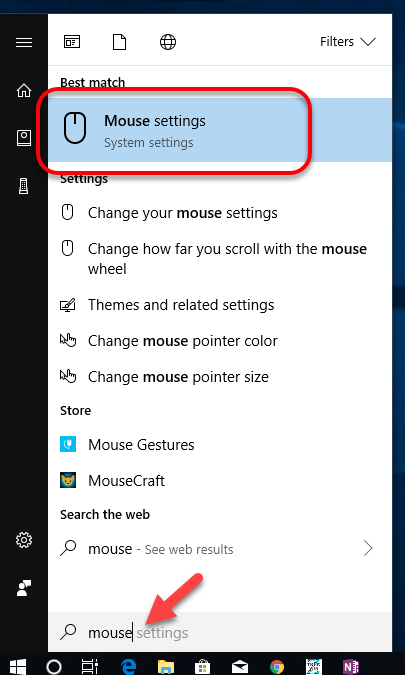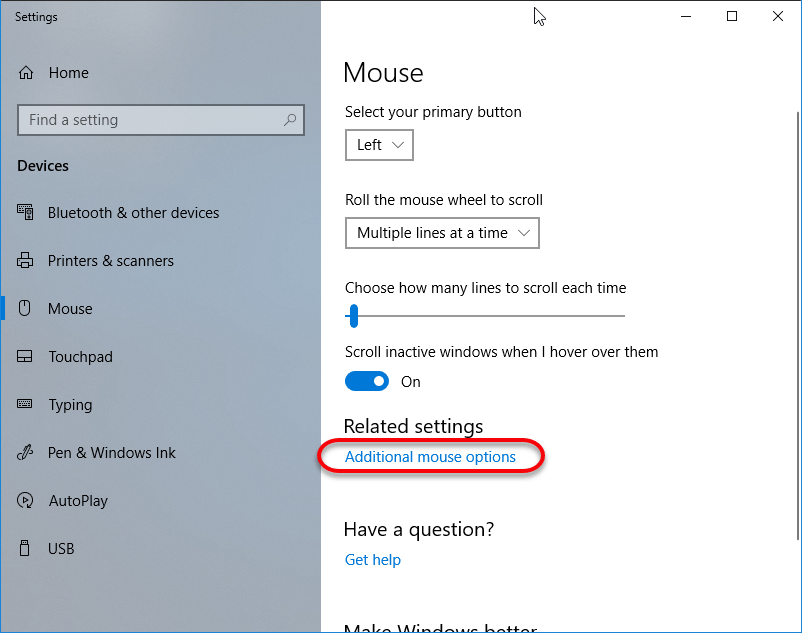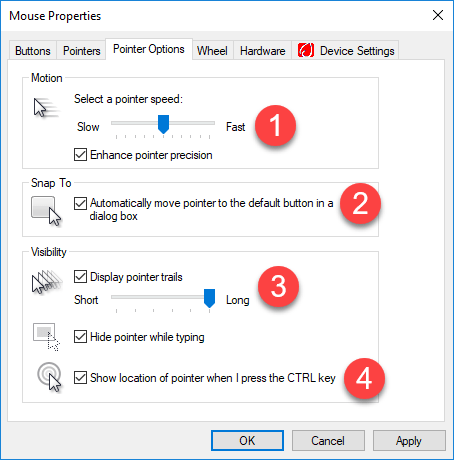Shop Floor Computer Tip
We’ve all been there. Moving our mouse around trying to find the pointer on the screen. This can be especially troublesome in a shop floor environment. Computer screens are small. Full of dust and dirt. Poor lighting and perhaps even a poor mouse surface. All of these factors can make use of a computer on as shop environment annoyingly painful.
Beyond the obvious improvements like a larger, regularly cleaned monitor and improved lighting, there’s a couple simple tweaks you can make to keep your staff providing value as opposed to looking for a mouse pointer.
Advanced Mouse Options
Using your Additional Mouse Settings, you can make a couple quick changes that will significantly improve the usability of a shop floor system. Simply press the Windows key on your keyboard and type Mouse.

This should display the Mouse Settings option in the search results, that’s what you’ll want to click. This will bring up the Mouse Settings window. Here you’ll want to click the Additional Mouse Options link.

Now from the Mouse Properties dialog, there’s a few things, you should make adjustments to.

- Select a pointer speed – You may want to turn down your pointer speed. It can be hard to find and track a mouse if it’s moving really fast.
- Automatically move pointer to the default button in a dialog box – This setting may help depending on the software used on the shop floor. It may also be annoying. However, every time a dialog or window is opened, you’re cursor will be in a predictable location.
- Display pointer trails – This leaves a few images of your cursor trailing around as you move your mouse. The longer the trail, the easier it will be to spot your mouse as you move it. Longer trails will have the most visibility.
- Show location of pointer when I press CTRL key – You’ve likely seen this trick in software presentations. Press and release the CTRL key and a series of circles will radiate out from your mouse position.
A Word About Machine Controls
A lot of machines now are using Windows based controls. If these systems rely on the use of a Mouse instead of a touch screen, you may want to make these same changes. However these systems can often launch upon startup and make it appear you have no access to the Standard Windows interface. You can often simply plug in a keyboard and mouse into a USB port for quick access. You can then use standard Keyboard tricks to get you to a more familiar interface.
- Press the Windows key on the keyboard to bring up the standard Windows menu.
- Press Alt-Tab to gain access to other running or hidden applications.
If the control is running in Kiosk mode, you may not have access to the standard Windows options. In this case, press CTRL-ALT-DELETE to bring up the Task Manager. From the Task Manager, you can launch a new process or run a new program. You can simply type Explorer.exe and this will reload the Windows interface you’re use to allowing you to make the mouse changes.